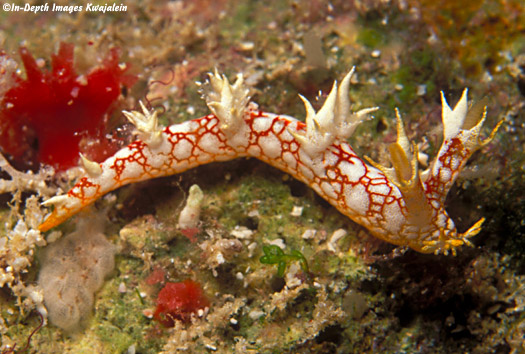
The 25mm specimen in the first four photos was found in a shallow ledge in the windward seaward reef's groove and spur system of Kwajalein Atoll. This is right in or just out from the zone where the ocean waves break on the reef and for most of the year, it is an extremely rough and surgy area. Only during the doldrums and when the swell is down are we able to dive there. It is amazing that these small nudibranchs can hold on during the normally surgy conditions. Yet this is not the only nudibranch found there. This zone is also the best area in the atoll for Glossodoris rufomarginata, Doriprismatica atromarginata, Pteraeolidia semperi, and Flabellina exoptata. Bornella sp. e468 differs from the more common Bornella stellifer in that it has a much brighter red network of lines over a white body, and its dorsolateral processes are white and very slightly flattened. The dorsolateral processes form three pairs, plus a couple of small single processes near the posterior end. The processes could be described as bifid at the tips with three to four smaller points around the base. The rhinophore sheaths have 4 or 5 supra-marginal papillae, the posterior one of which is larger and bifid or trifid. This species has also been observed on shallow interisland reefs at Rongelap Atoll by John and Lynette Flynn.

The small black eye is visible just below the rhinophore sheath in the specimen below.
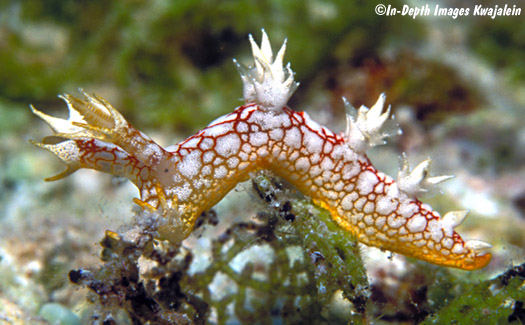
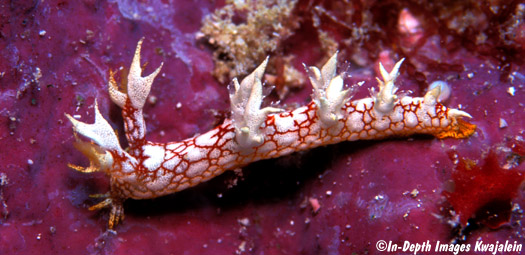
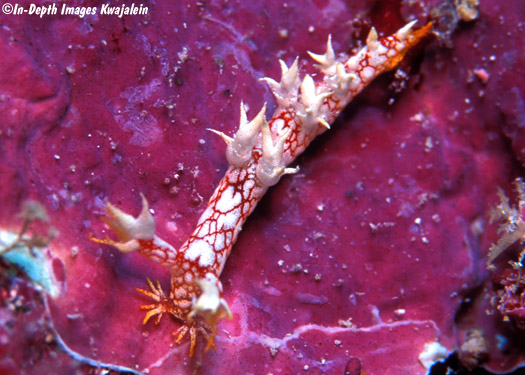
The 10mm specimen below was under a rock on the lagoon side of the reef where the original specimen (above) was found. We wonder if it, like a few other species such as Glossodoris rufomarginata, rolled across the reef with the tide.
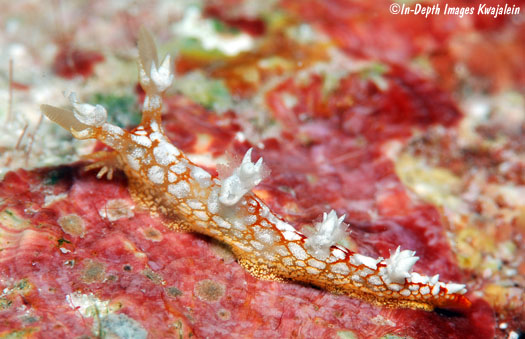
Christina Sylvester has found two more specimens in one of the Kwajalein reef quarries, into which they may have been swept from the spur and groove system just a few meters away. This one was photographed on 13 February 2017.
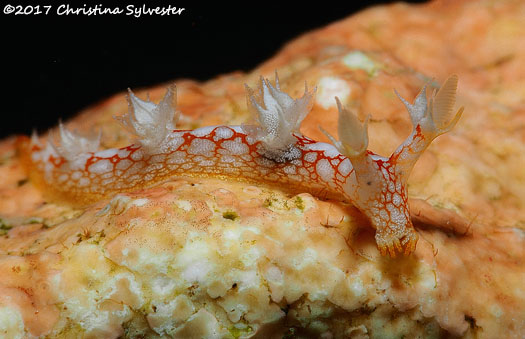
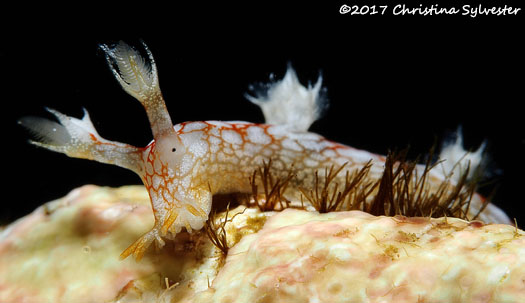
You can't have too many pictures of this Bornella.
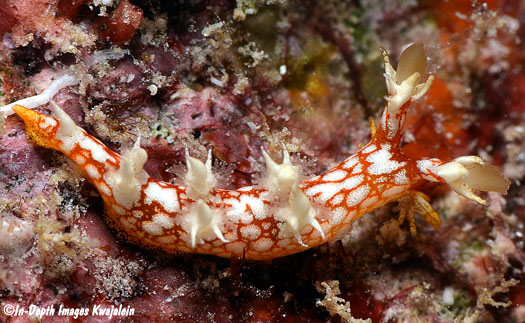
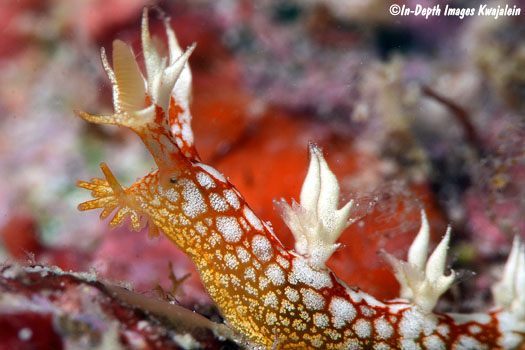
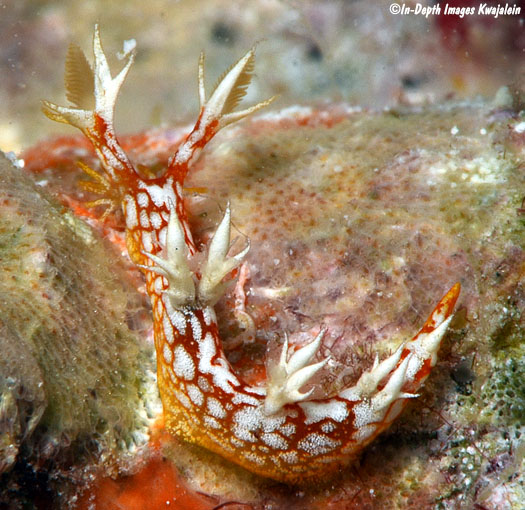
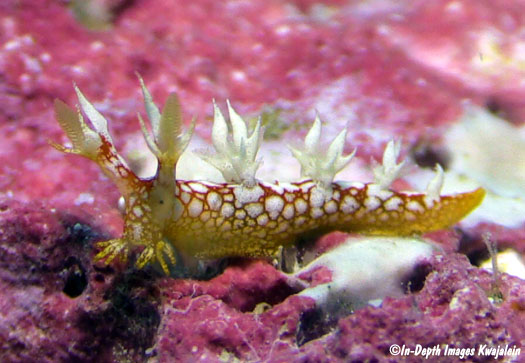
Three individuals of this species have been photographed at Rongelap Atoll by John and Lynette Flynn. The 11, 12 and 15mm specimens, two of which are figured below, were just to the lagoonward side of the open reef in NE Rongelap "under rocks in areas that experience very strong current, with lots of sponges, algae, weed, corals and other small critters." Finding multiple individuals suggests these areas are typical habitat for this species.
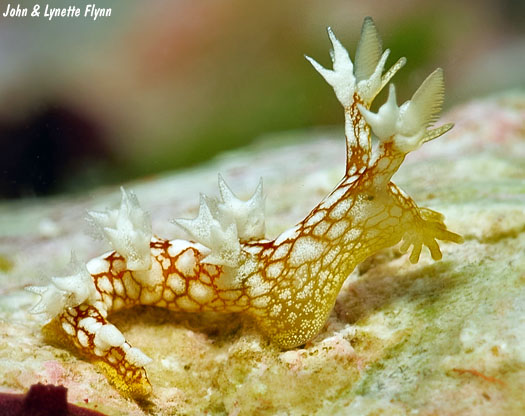
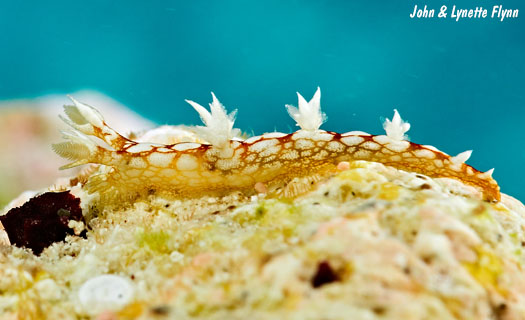
Created 20 January 2007
Updated 3 May 2021